In the interests of best serving the Member States that make up the International Organisation of Vine and Wine, the responses were analysed and sent to the platform in question, to improve this service for potential future virtual meetings.
Here is the analysis and proposed explanation.
Out of the 150 responses obtained (37%), users indicated that, overall, they were satisfied, with an average rating of 8/10.
Over the 22 meetings of the 4 Commissions and Sub-Commissions, almost half of the experts (48%) participated in 2-5 meetings. In cross-analysing the responses to questions 1 and 4, it can be observed that the difficulty in using the platform decreases drastically as the number of uses increases.

The OIV had drawn up a user guide beforehand to prepare attendees as best as possible, with a list of steps to follow to ensure meetings are conducted properly. The relevance and usefulness of this approach will be re-evaluated based on the average rating, which was 8/10.
Points to be improved
There were some shortcomings encountered when joining and participating: 41% of respondents had issues connecting to the internet, 31% had sound problems and 10% had camera problems. Additionally, 16% of the experts found the KUDO platform difficult to use: as an example, 11% of experts had difficulty requesting access to the floor (space to speak). As a reminder, requesting to speak on KUDO entails two steps: first, a request to speak from the expert, and second, the moderator's acceptance so that the expert may appear on the floor and speak.

Due to the way it functions, the KUDO platform can host up to 5 people on the floor at any one time. Nevertheless, the absence of visibility during meetings was a concern for 20% of experts surveyed. The limitation on the number of people is due to the bandwidth required by KUDO, and it was the OIV’s decision to treat the floor in the same way as during in-person meetings.
Other minor problems were indicated, such as the time window for meetings (8%), a lost password (9%) or firewalls blocking KUDO (9%), and these should also be kept in mind for the future.
However, despite the difficulties encountered, 83% of the experts surveyed agreed that these technical problems were resolved efficiently by the technical team available to them. Indeed, the problems experienced by each participant were continually monitored throughout the month of meetings.
Strengths of the platform
At the same time, there were some notable advantages that emerged from using this platform for the spring meetings.
The availability of simultaneous interpreting was welcomed by 83% of respondents. Indeed, the KUDO platform enabled experts to follow the meetings in the 5 official languages of the OIV – an essential prerequisite that was decisive in the OIV's decision to use KUDO.
The possibility of joining meetings from their country of origin was one of the main advantages for 68% of those surveyed. Holding virtual meetings not only allowed for progress to be made on the work, with 18 resolutions being advanced to step 7, but also resulted in a 56% increase in expert participation between 2019 and 2020.
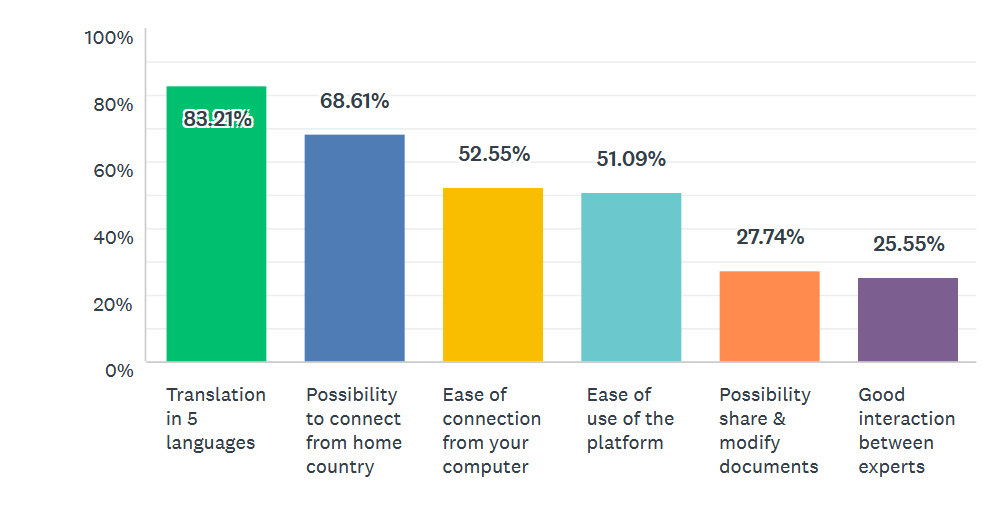
Despite the absence of direct contact, the vast majority of participants indicated they were generally satisfied (7/10) with the capacities for interaction and requesting the floor provided by this platform.
There was an open question at the end of the first part of the questionnaire, where the experts were invited to make suggestions to improve future OIV meetings on the platform. The OIV took careful note of the 85 responses received and sent these comments to KUDO.
The main trends that emerged relate to optimisation of the chat (direct channel with the operator, more clarity in private chats, etc.), the need to clearly identify who is speaking, and the sometimes-lengthy registration process. Some respondents suggested also using the platform for the electronic working groups in order to get better acquainted with it.
The OIV expert profile and cross-analysed trends
A second, optional questionnaire was made available to draw up a portrait of the typical user during the June meetings.
The typical expert worked from home (59%) on a professional computer (64% [57% specifically on a laptop]) that was less than 3 years old (42%). A total of 86% of users ran Windows and 91% used Google Chrome as their browser. WiFi connection was preferred (57%) and 43% used fibre optic. The accessories used were mainly components built into their computer, with 86% having an integrated camera and 39% integrated audio. However, 39% also used a headset. Finally, among the people who did not participate in the meetings, 53% cited lack of time as their reason for not joining, rather than technical issues.
Cross-analysing data to create this profile has enabled us to understand the origin of some failures. For example, use of the Chrome browser was necessary for fluidity of speech. The first graph shows that only 13% of experts who used this browser had problems with requests to speak, compared with 60% of those using Firefox.
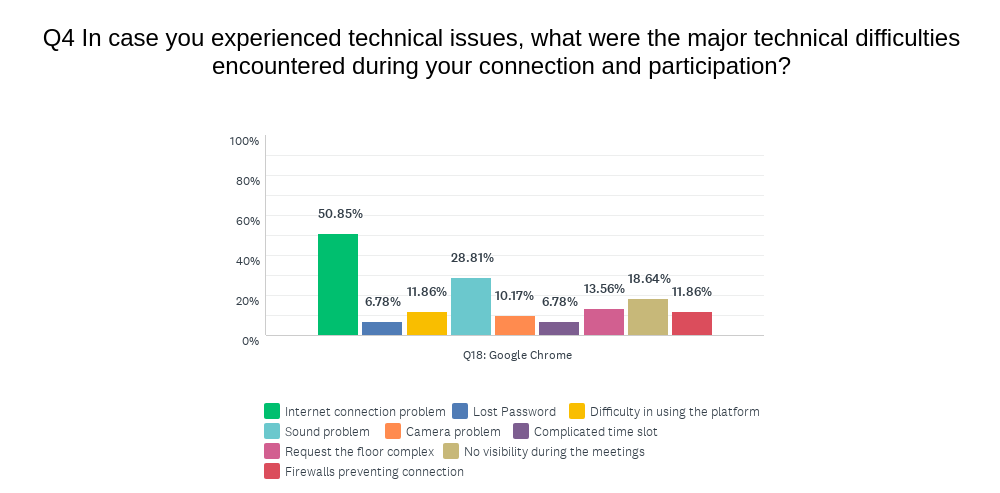
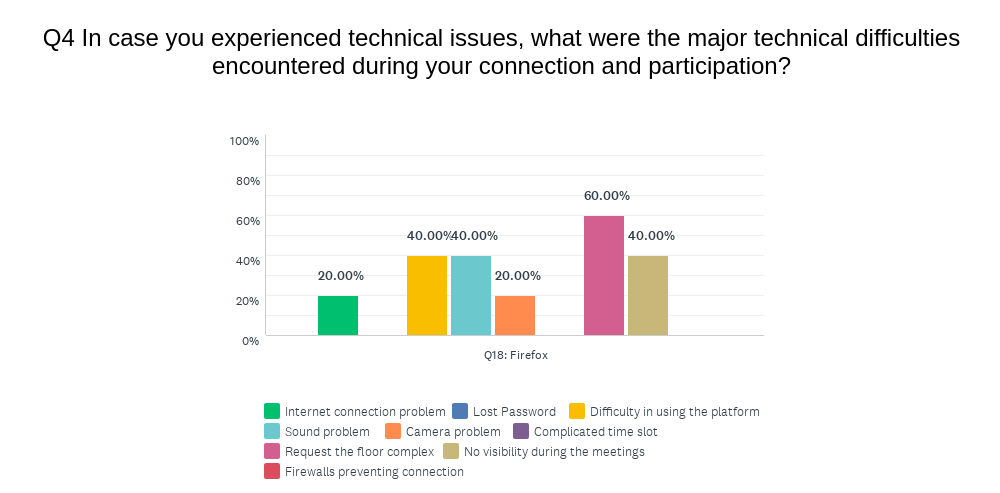
In the same vein, people using 4G had many more connection problems (66%) than those using cable or fibre optic (38% respectively).
Finally, many sound and video issues can be explained by an absence of use of appropriate hardware devices: for example, the use of an external headset reduced the citing of sound problems from 37% to 16%.
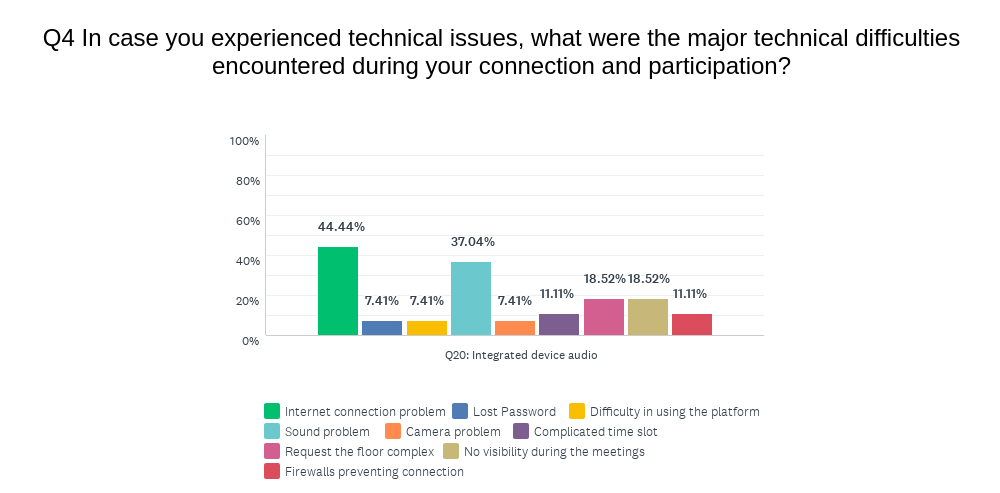
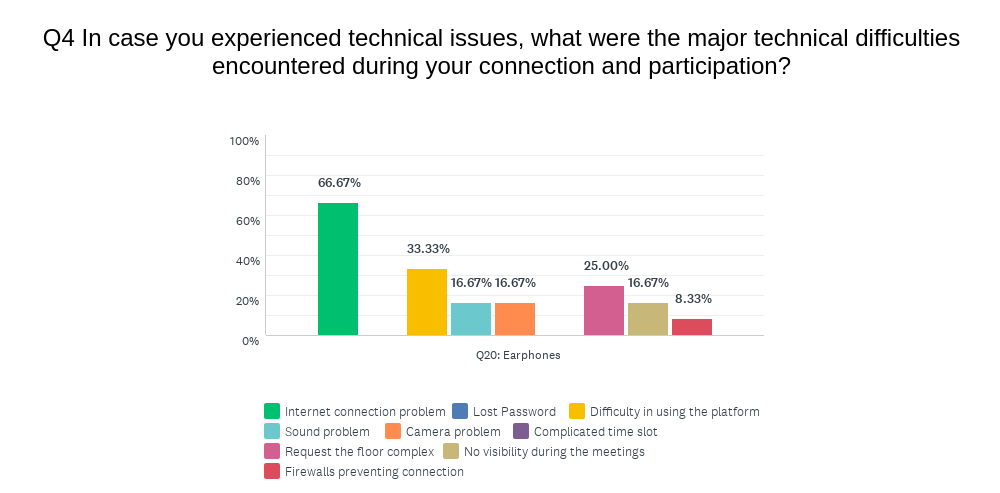
Following a debrief meeting with KUDO and the questionnaire feedback, a second document will be drawn up with the specifics of points to be solved before the next meetings.
Click here to see the meetings in pictures!